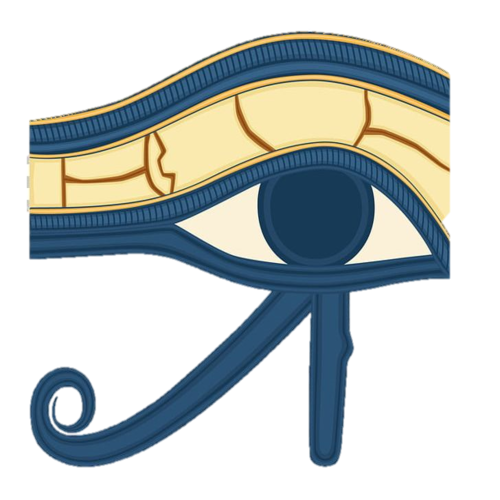| Ahmose-Meritamen | ||||||||||||||||
|---|---|---|---|---|---|---|---|---|---|---|---|---|---|---|---|---|
"Born of the Moon, Beloved of Amun" | ||||||||||||||||
 Ahmose-Meritamen's outer coffin (JE 53140) in the Egyptian Museum, Cairo.© | ||||||||||||||||
| Dynasty | 18th Dynasty | |||||||||||||||
| Pharaoh(s) | Ahmose II Amenhotep I | |||||||||||||||
| Titles | King's Great Wife God's Wife God's Wife of Amun United with the Beautiful White Crown Lady of the Two Lands King's Mother King's Sister King's Daughter | |||||||||||||||
| Father | Ahmose II | |||||||||||||||
| Mother | Ahmose-Nefertari | |||||||||||||||
| Spouse(s) | Amenhotep I | |||||||||||||||
| Burial | TT358 (reburial) | |||||||||||||||
- Not to be confused with Ahmose-Meritamen (daughter of Tao II).
- For other pages by this name, see Ahmose or Meritamen.
Ahmose-Meritamen or Ahmose-Meryetamun (Ancient Egyptian: ỉꜥḥ-ms mry.t-ỉmn, "Born of the Moon, Beloved of Amun") was an ancient Egyptian Queen of the Eighteenth Dynasty during the New Kingdom.
Titles[]
Ahmose-Meritamen is known to have held the titles: Lady of the Two Lands (nbt-tꜣwy), King's Great Wife (ḥmt-nswt-wrt), Mistress of the entire Two Lands (ḥnwt-tꜣwy-tm), God's Wife (ḥmt-ntr), God's Wife of Amun (ḥm.t nṯr n ỉmn), United with the White Crown (ẖnmt-nfr-ḥḏt), King's Daughter (sꜣt-nswt), and King's Sister (snt-nswt). The title King's Mother (mwt-nswt) is also recorded in later sources, even though she was never the mother of a king.[1]
Family[]
Ahmose-Meritamen was the principal wife of Pharaoh Amenhotep I. She was the daughter of Pharaoh Ahmose II and Queen Ahmose-Nefertari.[2] Upon queenship, Ahmose-Meritamen took over the role of "God's Wife of Amun" from her mother. She is not known to have had any children.
Attestation[]

Bust of Ahmose-Meritamen, wearing a wig associated with the goddess Hathor.
A limestone statue of this queen was discovered by Giovanni Belzoni while he was working in Karnak in 1817.[3]
Ahmose-Meritamen is depicted in the TT359 tomb of Inherkhau which dates to the 20th Dynasty and shows a group of royal family members. She is shown in the top row behind Queen Ahhotep I and in front of Queen Sitamun.[2]
Burial[]
Her remains were discovered in 1930 in the TT358 tomb at Deir el-Bahari by Herbert Eustis Winlock. Her mummy was found in two cedarwood coffins and a cartonage outer case. Her mummy had been rewrapped and reburied by priests who had found her tomb that had been vandalized by robbers.[4]
The outer coffin (now in the Egyptian Museum, JE 53140) is over 10 ft in size and is made from cedar planks which are joined and carved to a uniform thickness throughout the coffin. The eyes and eyebrows are inlaid with glass. The body is carefully carved with chevrons painted in blue to create the illusion of feathers. The coffin was covered in gold which had been stripped in antiquity. The inner coffin was smaller, but still over 6 ft tall. The inner coffin had also been covered in gold but stripped of this precious metal.[5]
Mummy[]

Ahmose-Meritamen's inner coffin.©D. Denisenkov
The mummy had been carefully rewrapped during the reign of Pinedjem I. Inscriptions record that the linen used in the reburial was made in Year 18 of Pinedjem by the High Priest of Amun Masaharta, son of Pinedjem I. The reburial took place in Year 19, III Peret 28.[5] It appears that she died when she was in her early thirties, with evidence of being afflicted with arthritis and scoliosis.[4]
In April 2021 his mummy was moved from the Museum of Egyptian Antiquities to National Museum of Egyptian Civilization along with those of 3 other queens and 18 kings in an event termed the Pharaohs' Golden Parade.[6]
References[]
- ↑ Grajetzki 2005.
- ↑ 2.0 2.1 Dodson & Hilton 2004, p. 123, 127, 129.
- ↑ "Upper part of a limestone statue of Queen Ahmose-Merytamun". The British Museum.
- ↑ 4.0 4.1 Tyldesley 2006, p. 91.
- ↑ 5.0 5.1 Winlock 1975, p. 77-89.
- ↑ Parisse, Emmanuel (5 April 2021). "22 Ancient Pharaohs Have Been Carried Across Cairo in an Epic Golden Parade". ScienceAlert.
Bibliography[]
- Dodson, A./Hilton, D., 2004: The Complete Royal Families of Ancient Egypt. Thames & Hudson, London.
- Grajetzki, W., 2005: Ancient Egyptian Queens: A Hieroglyphic Dictionary. Golden House Publications, London.
- Tyldesley, J., 2006: Chronicle of the Queens of Egypt. Thames & Hudson, London.
- Winlock, H.E., 1975: The Tomb of Queen Meryetamun: I The Discovery. The Metropolitan Museum of Art Bulletin New Series, Vol. 33, No. 2, New York.
